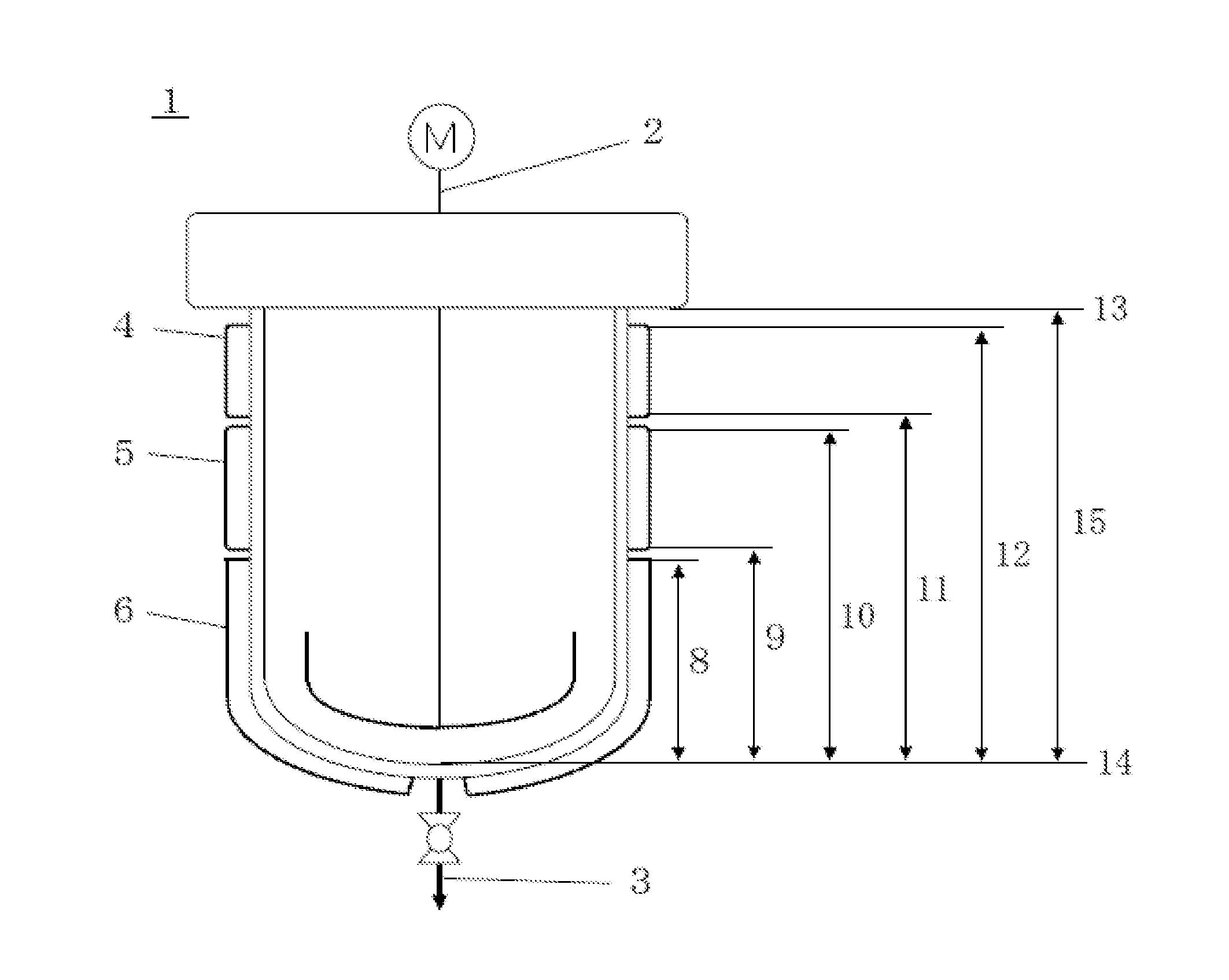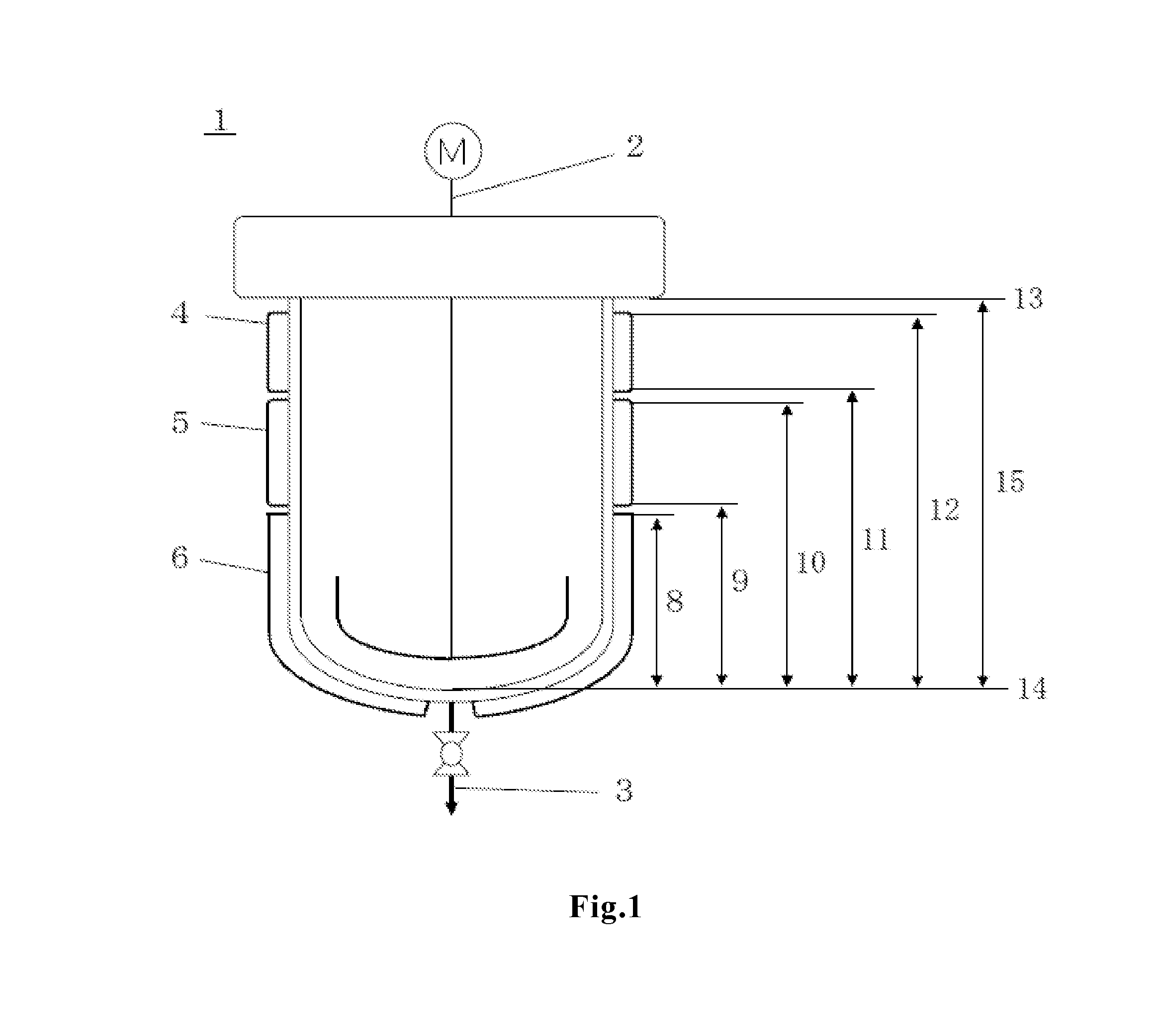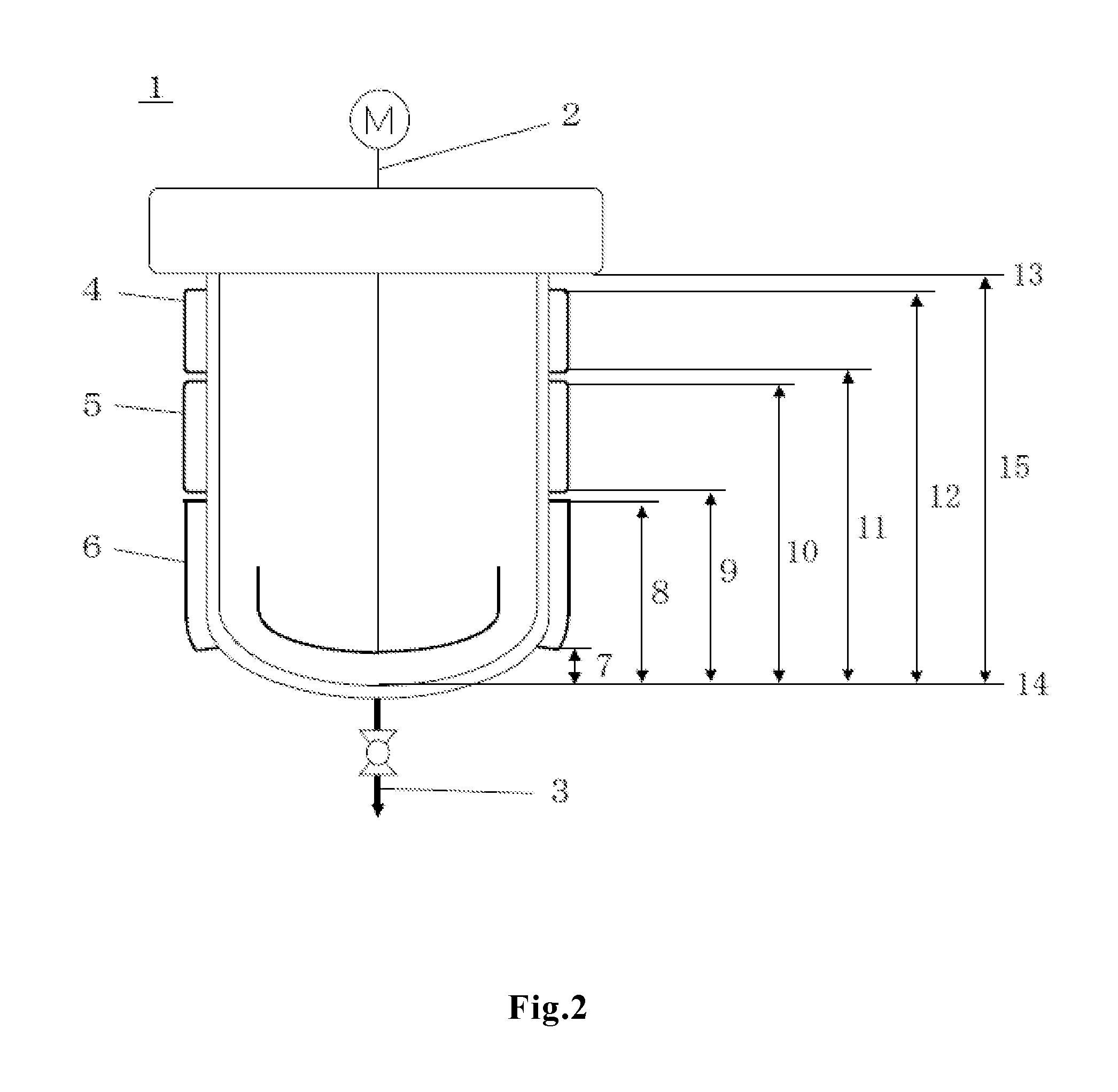Process for producing liquid crystalline polyester resin and apparatus for producing liquid crystalline polyester resin
- Summary
- Abstract
- Description
- Claims
- Application Information
AI Technical Summary
Benefits of technology
Problems solved by technology
Method used
Image
Examples
example 1
[0115]A 5-L acetylation reaction vessel 1 that has a distillation pipe, a container for distilled acetic acid, and a helical blade and has an inner wall surface composed of a material A (composition: Ni; 57% by mass, Cr; 16% by mass, and Mo; 16% by mass) was provided. A jacket in which a heating medium circulation line was embedded was used as a heating body, and the outer wall surface of the acetylation reaction vessel 1 was covered with jackets divided into three. Each jacket covered the outer wall surface at an area as follows: a heating body 1 (a band-like zone 1): vessel height ratio; 0 to 30%, a heating body 2 (a band-like zone 2): vessel height ratio; 30 to 70%, and a heating body 3 (a band-like zone 3): vessel height ratio; 70 to 90%. Using a heater and a circulating pump connected to each jacket, a heating medium (available from Nippon Steel Chemical Co., Ltd., Therm-S 600) was circulated in the jackets. While controlling the temperature of the three jackets each individual...
example 2
[0120]Example 1 was repeated except that the components charged to the acetylation reaction vessel 1 were changed to those described below.[0121]977 parts by mass of p-hydroxybenzoic acid (54 mol %)[0122]541 parts by mass of 4,4′-dihydroxybiphenyl (22 mol %)[0123]15 parts by mass of hydroquinone (1 mol %)[0124]328 parts by mass of terephthalic acid (15 mol %)[0125]177 parts by mass of isophthalic acid (8 mol %)[0126]1476 parts by mass (1.10 equivalents of the total phenolic hydroxyl groups) of acetic anhydride
[0127]The temperature of the reaction solution at the end of the oligomerization reaction in the acetylation reaction vessel 1 was 267° C., and the acetic acid distillation rate was 89%. The corrosion rate of the test piece was acceptable, and also the amount of filtered collection was small and acceptable. For the quality of the pellet obtained, the melting point was 324.1° C. (average value) with little variation, and the color tone L value was also acceptable.
example 3
[0128]Example 1 was repeated except that the components charged to the acetylation reaction vessel 1 were changed to those described below.[0129]1354 parts by mass of p-hydroxybenzoic acid (73 mol %)[0130]228 parts by mass of 4,4′-dihydroxybiphenyl (9 mol %)[0131]204 parts by mass of terephthalic acid (9 mol %)[0132]236 parts by mass of polyethylene terephthalate (9 mol %)[0133]0.36 parts by mass of sodium hypophosphite (0.02% by mass)[0134]1382 parts by mass (1.11 equivalents of the total phenolic hydroxyl groups) of acetic anhydride
[0135]The temperature of the reaction solution at the end of the oligomerization reaction in the acetylation reaction vessel 1 was 267° C., and the acetic acid distillation rate was 89%. The corrosion rate of the test piece was acceptable, and also the amount of filtered collection was small and acceptable. For the quality of the pellet obtained, the melting point was 326.2° C. (average value) with little variation, and the color tone L value was also a...
PUM
| Property | Measurement | Unit |
|---|---|---|
| Fraction | aaaaa | aaaaa |
| Fraction | aaaaa | aaaaa |
| Fraction | aaaaa | aaaaa |
Abstract
Description
Claims
Application Information
 Login to View More
Login to View More - R&D
- Intellectual Property
- Life Sciences
- Materials
- Tech Scout
- Unparalleled Data Quality
- Higher Quality Content
- 60% Fewer Hallucinations
Browse by: Latest US Patents, China's latest patents, Technical Efficacy Thesaurus, Application Domain, Technology Topic, Popular Technical Reports.
© 2025 PatSnap. All rights reserved.Legal|Privacy policy|Modern Slavery Act Transparency Statement|Sitemap|About US| Contact US: help@patsnap.com



